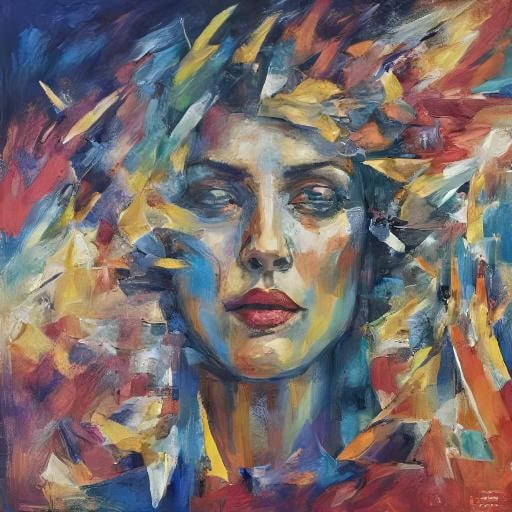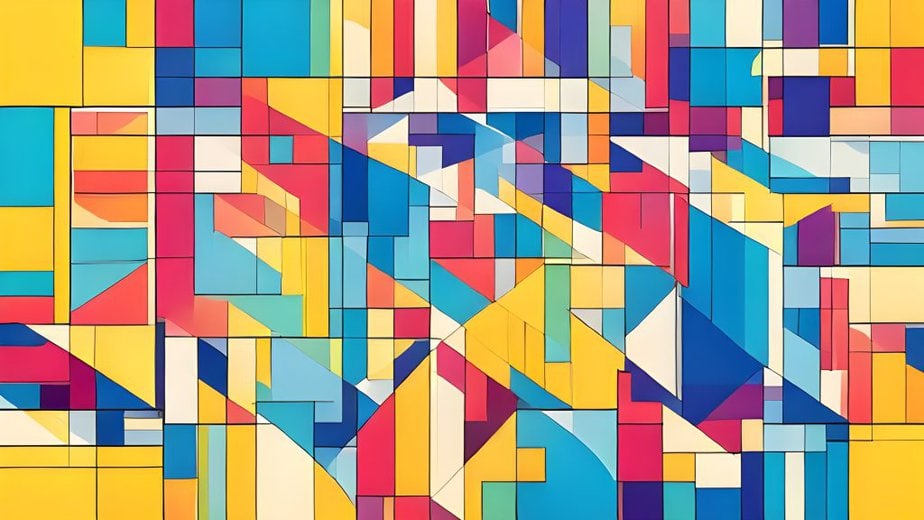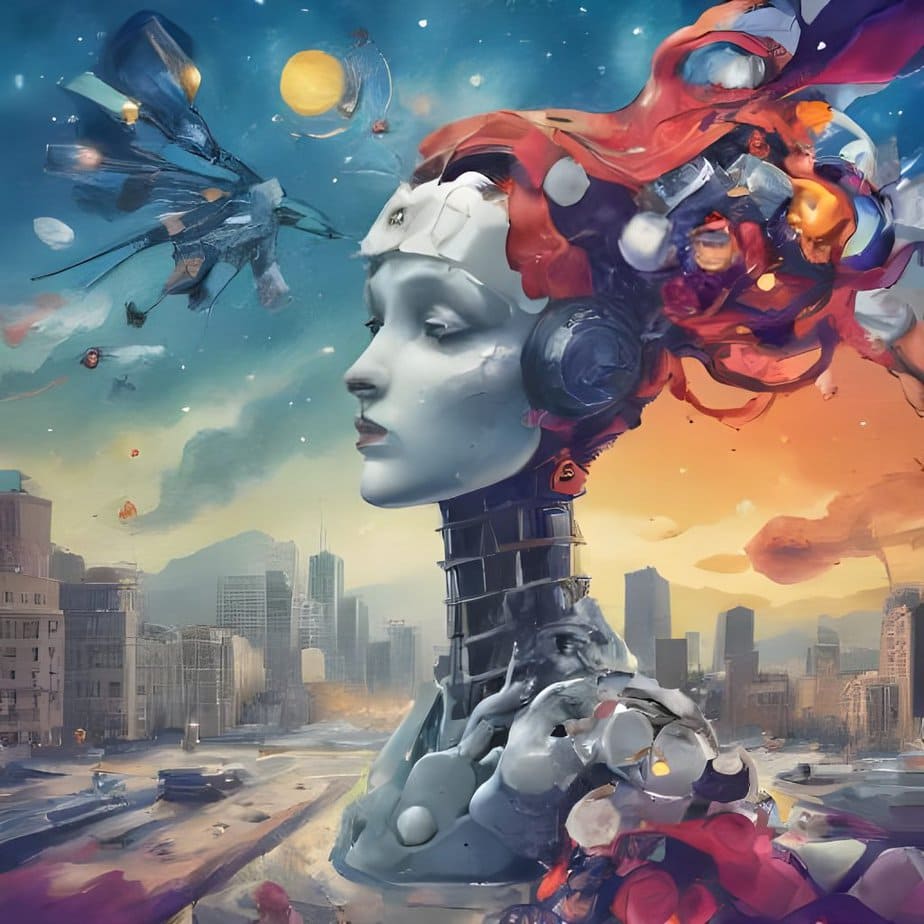Generative AI has the potential to play a significant role in art therapy by augmenting and enhancing the therapeutic process. Art therapy is a form of psychotherapy that utilizes art-making as a means of communication, self-expression, and personal exploration. Integrating generative AI into art therapy can offer unique benefits and possibilities for both clients and therapists.
Here are some ways in which generative AI can contribute to art therapy
Creative Exploration and Inspiration
Generative AI algorithms can generate a wide range of visual and auditory stimuli, providing clients with a rich source of inspiration for their art-making process.
By introducing generative AI-generated prompts, therapists can spark creativity, encourage experimentation, and expand the artistic possibilities for clients.
Expressive Freedom
Generative AI can enable clients to explore new artistic styles, techniques, and forms without the constraints of their artistic abilities or self-judgment.
 AI algorithms can generate diverse visual outputs, allowing clients to experiment and express themselves in novel ways that they might not have considered before. This freedom can foster self-discovery, personal growth, and emotional expression.
AI algorithms can generate diverse visual outputs, allowing clients to experiment and express themselves in novel ways that they might not have considered before. This freedom can foster self-discovery, personal growth, and emotional expression.
Therapeutic Engagement
Generative AI can enhance client engagement and immersion in the therapeutic process. Interactive AI systems can respond to the client’s artistic input in real-time, providing immediate feedback or generating complementary visuals or sounds.
 This interactive feedback loop can deepen the client’s engagement, motivation, and sense of connection with the therapeutic experience.
This interactive feedback loop can deepen the client’s engagement, motivation, and sense of connection with the therapeutic experience.
Symbolic Representation and Reflection
AI algorithms can analyze and interpret the symbolism and meaning within clients’ artwork.
By using computer vision or natural language processing techniques, generative AI can assist therapists in understanding and interpreting the underlying emotions, themes, and narratives present in the artwork.
This AI-assisted analysis can facilitate deeper self-reflection and insight for both the client and the therapist.
Collaborative Art-Making
Generative AI systems can facilitate collaborative art-making experiences between clients and therapists. AI algorithms can generate partial artwork or suggestions, which clients and therapists can then build upon together. This collaborative process fosters a sense of shared exploration, trust, and co-creation, enhancing the therapeutic relationship and promoting a sense of empowerment.
Therapist Support
Generative AI tools can provide valuable support for art therapists in their assessment and treatment planning. AI algorithms can assist in analyzing and organizing large amounts of visual and textual data collected during therapy sessions, helping therapists identify patterns, track progress, and make informed decisions. This AI-enabled support can augment the therapist’s expertise and enhance the overall quality of care.
Generative AI can be a valuable tool in art therapy, assisting individuals in expressing themselves and facilitating the healing process through the creative medium. Here are several ways in which generative AI can be applied in art therapy to support individuals.
Promoting Creative Exploration
Generative AI algorithms can generate a wide range of visual, auditory, or mixed-media prompts, providing individuals with inspiration and encouraging creative exploration. By presenting novel and unexpected stimuli, AI-generated prompts can push individuals out of their comfort zones, sparking new ideas and facilitating self-expression.
Overcoming Artistic Blocks
Generative AI can help individuals overcome artistic blocks or insecurities. By generating initial elements or suggestions, AI systems can provide a starting point for individuals who may feel uncertain about their artistic abilities. This support can empower them to engage in the creative process and express themselves freely.
Encouraging Experimentation
AI-generated prompts can introduce individuals to different artistic styles, techniques, and mediums they may not have considered before. This exposure to diverse options can encourage experimentation and open up new avenues for self-expression. Generative AI can generate alternative versions or variations of individuals’ artwork, allowing for exploration and self-discovery.
Facilitating Emotional Expression
Art therapy often involves the expression of complex emotions that may be difficult to put into words. Generative AI can assist individuals by providing visual or auditory representations of their emotions. AI algorithms can analyze the content and style of individuals’ artwork, helping uncover underlying emotional states and facilitating discussions around them.
Enhancing Symbolic Representation
Generative AI algorithms can assist in interpreting and understanding the symbolism embedded in individuals’ artwork. By analyzing visual or textual elements, AI systems can help identify recurring themes, patterns, or metaphors, enabling deeper insight and self-reflection. This AI-assisted analysis can support individuals in exploring and understanding their own narratives and experiences.
Enabling Interactive Art-Making
Generative AI systems can provide interactive feedback and engagement during the art-making process. For example, AI algorithms can respond in real-time to individuals’ artistic input by generating complementary visuals or sounds. This interactive exchange can enhance the sense of presence, immersion, and connection, facilitating a more engaging and therapeutic experience.
Supporting Reflection and Progress Tracking
Generative AI can assist art therapists in analyzing and tracking individuals’ progress over time. By organizing and analyzing a large volume of visual and textual data, AI algorithms can identify patterns, changes, and themes in individuals’ artwork. This data-driven approach can support therapists in assessing the effectiveness of interventions and tailoring treatment plans accordingly.
It is crucial to emphasize that generative AI should be employed as a supportive tool within the therapeutic relationship, with the art therapist guiding and facilitating the process. Ethical considerations, such as privacy, informed consent, and the individual’s autonomy, should be addressed when using generative AI in art therapy.
The article contains sponsored affiliate links from Amazon to valuable resources.


